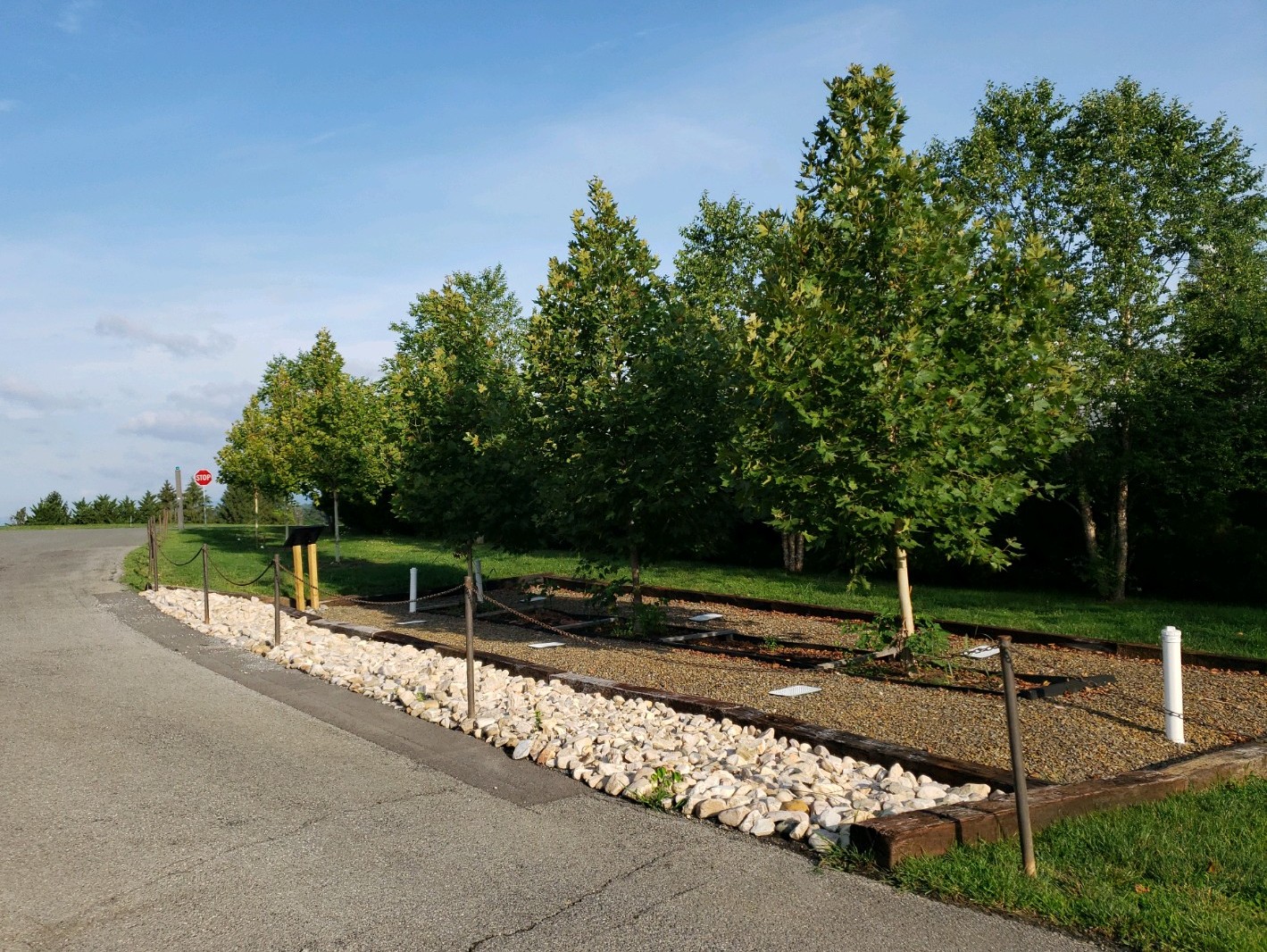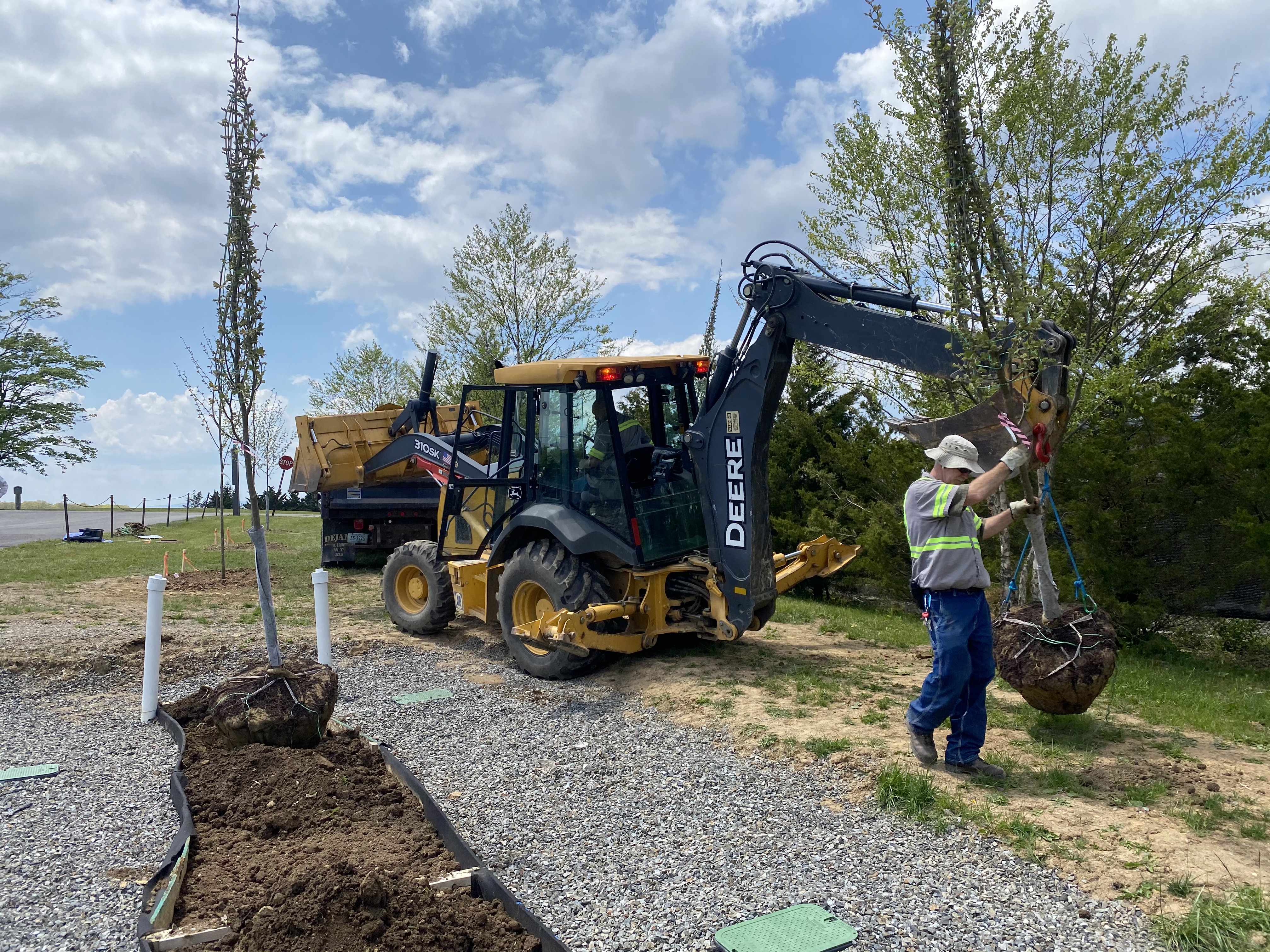Project Objectives
- Perform a detailed literature review and prepare a guidance document about selecting suitable tree species for stormwater bioretention systems.
- Plan and construct a multi-tree gravel bed system to demonstrate functionality of several trees in a gravel bed stormwater bioretention system.
- Develop educational literature showing the functionality and benefits of a gravel bed stormwater bioretention system.
Background
Land development increases impervious surfaces that prevent rain from seeping into the ground. Stormwater runoff causes flash floods and pollutes nearby streams with toxins and sediment. Curbs, gutters, and pipes to control stormwater are expensive and do not cleanse water before it is discharged.
Trees reduce stormwater runoff by catching rain in their leafy canopies. Water drops fall and flow from the canopy and seep into the ground through root channels. Tree roots absorb water and expel it through leaves back into the air. Many pollutants are also removed from water during this recycling.

View of gravel bed stormwater bioretention system in July 2022, two years after construction completion in May 2020.
Construction
Constructed in 2020, this system captures stormwater runoff from a parking lot located on Virginia Tech’s campus and uses trees to recycle the water. Soil was excavated to a depth of 5 feet and replaced with quarzitic gravel surrounding a topsoil trench held in place with a plywood frame.
London planetrees (Platanus × acerifolia ‘Morton Circle’) were planted into the topsoil, and their roots grow through openings in the plywood into the gravel bed. The gravel is very porous and can hold lots of water. When it rains, the gravel bed fills up with runoff. Tree roots in the gravel absorb the water and recycle it back to the atmosphere. In their lifetimes, these trees will also filter air pollution, sequester carbon, cast shade, and provide aesthetic scenery.

Preparing trees for planting into gravel bed stormwater bioretention system in May 2020.
Monitoring
Trees growing in the gravel bed are being monitored for health, growth, and biological processes of photosynthesis and transpiration. They are being compared to identical trees growing in normal soil next to the gravel bed.

View of three experimental trees in gravel bed stormwater bioretention system in May 2021.

View of three control trees planted next to gravel bed stormwater bioretention system and used for experimental comparison.
Degree Papers of Graduate Students
Apisa, Ethan A. “Initial Performance of Trees in an Urban Stormwater Bioretention System.” VTechWorks Home, Virginia Tech, 28 Apr. 2022, https://vtechworks.lib.vt.edu/handle/10919/111552.
Sprouls, Jason M. “Growing Trees in a Gravel Bed Stormwater Retention System as a Novel Approach to Stormwater Management in Urban Sites.” VTechWorks Home, Virginia Tech, 19 May 2020, https://vtechworks.lib.vt.edu/handle/10919/99014.
